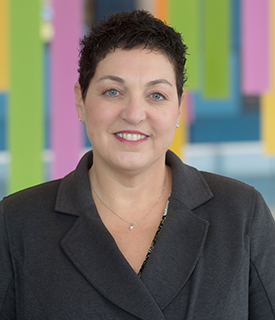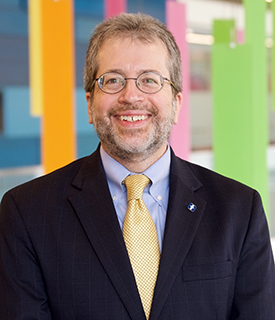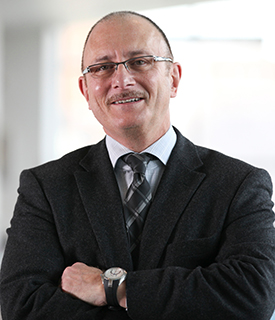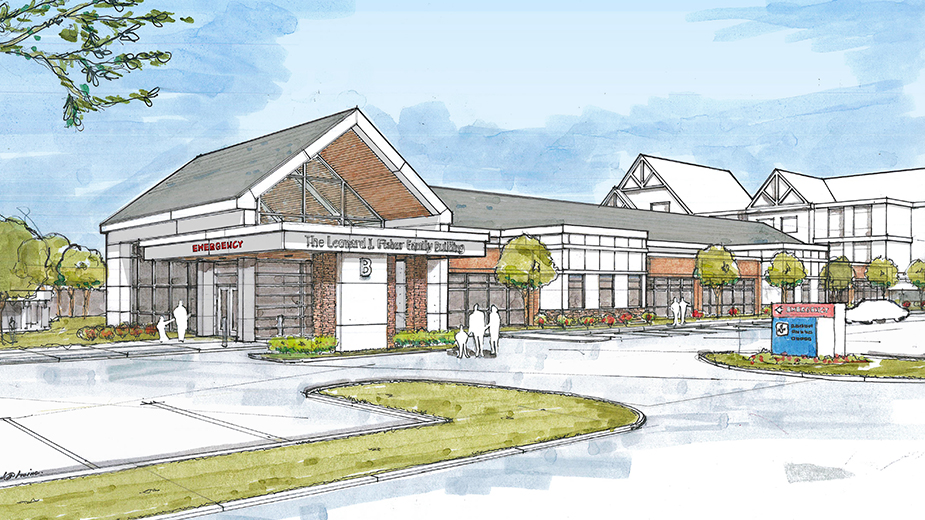BOARDMAN, Ohio – There’s been plenty of work going on at the Beeghly Campus of Akron Children’s Hospital Mahoning Valley in recent years.
In 2016, work started on an $18.6 million addition to Building A at the Boardman campus, followed by the renovation of the parking lot and, in late 2019, the addition of a behavioral health center on the back end of the campus, along Southern Boulevard.
But the biggest, most noticeable change coming to Akron Children’s Hospital Mahoning Valley is the forthcoming expansion of its emergency department: a $30 million project that is set to break ground this fall. Beyond just making the ER more than three times as large – expanding to 34,700 square feet from the current 9,600 – the project also aims to make the department more amenable to families and children. It’s an effort that Akron Children’s has had its eye on, in some form, since it took over the Boardman medical campus in 2008.
“When the emergency room was built [as an adjunct to the former Northside Medical Center], it was built as an emergency room to care for adults. When we acquired the property, we did some modification to accommodate our volume,” says Lisa Aurilio, chief operating officer for Akron Children’s. “Those rooms were designed for adult care. When you think about that, it’s usually a patient and maybe one family member with them. When children come to the emergency room, it looks much different. You have two parents, strollers, maybe grandparents, maybe other children. These rooms aren’t really the adequate size to provide for the whole family unit.”

LISA AURILIO
Shortly after Akron Children’s took over, volume was typically between 50 and 80 patients per day, she says. Today, that number is beyond 100 daily patients and more than 200 at peak times.
Simply put, there isn’t enough room for the hospital to provide care and comfort at the level it is targeting. With the expansion, the size of ER treatment rooms will expand to 800 square feet – up from 450 square feet currently available – and six rooms will be added, bringing the total to 23.
Some spaces will be dedicated to treating patients seeking care for behavioral health, as well as an expanded resuscitation room, funded by a $250,000 gift from the Cafaro Foundation. The ER expansion is partially funded by a $1 million gift from Leonard Fisher, chairman of Handel’s Homemade Ice Cream.
“It’s not an add-on. It’s our primary mission. Having a kid-friendly environment, whether it’s with a respiratory therapist or getting an X-ray or the person that greets them at the front desk, it provides a level of comfort for both the parents and children,” says Dr. Robert McGregor, chief medical officer of Akron Children’s. “If we don’t relate to them and don’t make them feel comfortable, they’re not going to be at their best and we can’t get the best picture of what’s going on.”
The project comes on the heels of other efforts by Akron Children’s to improve pediatric health care. In 2019, it opened a behavioral health center at the Boardman campus and has added a general surgeon, Dr. Douglas Potoka, which allows for more operations to be performed here rather than needing to move children to the main campus in Akron.
Also new to the area is an allergy and immunology program that will soon see the addition of innovative treatments.
“Our head of allergy and immunology [Dr. Brian Schroder] has developed a niche with oral desensitization. That’s something that’s relatively innovative,” McGregor says. “We kicked that off [in Akron] pre-pandemic and we’ll bring that to the Valley.”
The emergency department expansion is expected to take between 15 and 18 months once ground is broken this fall, says Paul Olivier, vice president of Akron Children’s Hospital Mahoning Valley.

“We’re excited about that, but we’re still making plans around how to best optimize the campus. All of our clinic leaders collaborate on which services we want to add in the Valley,” he says.
A key aspect of that is improving access to care and expanding beyond the Beeghly Campus in Boardman. The campus is a “safety net” for children’s health, Aurilio says, providing a space for emergency or specialty care.
“In that primary care office and in schools, we’re focusing on getting them their vaccines, on doing wellness checks, on doing early intervention if there are behavioral health concerns,” she says. “Our goal is to keep kids well so they don’t need [the emergency room] when they’re sick.”
The main campus is complementary to the care provided in doctor’s offices, Olivier says, especially with the increased use of telehealth serv-ices that can connect primary care offices with specialists.“It’s reassuring to families, it gets care delivered faster and, as a result, you get better outcomes overall,” he says.
The best place for children to get care – or any patient, for that matter – is in their own community with a team of medical professionals that see them regularly, Aurilio and McGregor say.
“We want to bring specialized care closer to families. We know that whenever you have a sick child, whether it’s a minor illness or a major illness, that’s stressful. We want to eliminate the stressors that can be eliminated,” Aurilio says. “If you’re driving 40 minutes for service, we want to take that away and bring service closer to families.”
In its primary care offices, Akron Children’s has added mental health screenings for all incoming patients. With such offices serving as a “home base” for patients, providing such screenings and having embedded mental health care can eliminate the sharp drop-off in care when patients are referred to outside offices for treatment.

“Someone may get a referral. But the chances of them seeking out that care decreases dramatically when they leave the office,” McGregor says. “Rather than getting everything back together and driving to another facility to keep an appointment, if you can walk up the hall to start your treatment, you’re in the system and it doesn’t necessarily carry the stigma that behavioral health has if you seek care in the community.”
In its 2019 community health needs assessment, the triennial report Akron Children’s puts together to guide its efforts and expansion, mental health was among the top concerns shown in data and focus groups.
“Groups in all three counties expressed concern about seeing depression, anxiety and emotional problems in children and a lack of services to address these issues. One of the groups was particularly concerned about seeing very young children, under age 5, having more serious and consistent behavioral and emotional issues,” the report states.
Among the other concerns outlined in the report are infant mortality, asthma and access to care. Beyond just providing medical care – there have been teams working on the first two issues for several years, Aurilio says – inroads need to be made on ensuring kids have access to care and the opportunity to be as healthful as possible. The social determinants of health – access to fresh produce, playgrounds, transportation and community safety – make up about 20% of a person’s overall health.
“For several years, we’ve implemented screenings for social determinants,” McGregor says. “If there’s food insecurity, we can tailor-make care delivery for the child and the family so we can keep them well and compliant with their medicine.”
Pictured at top: This is a rendering of how the exterior of the Leonard J. Fisher Family Building will look when construction is complete.
